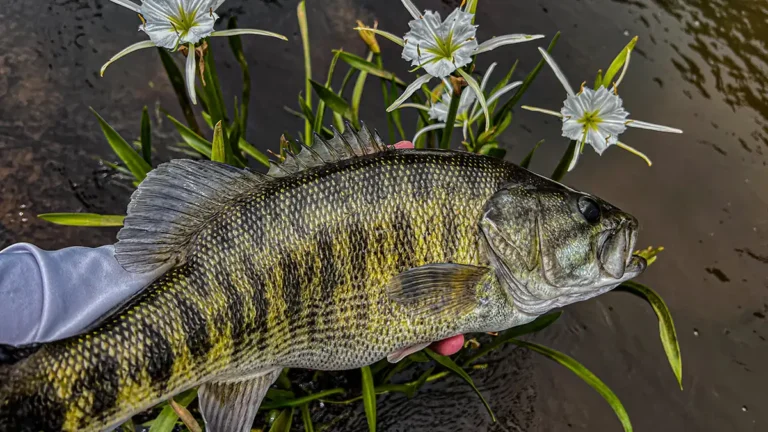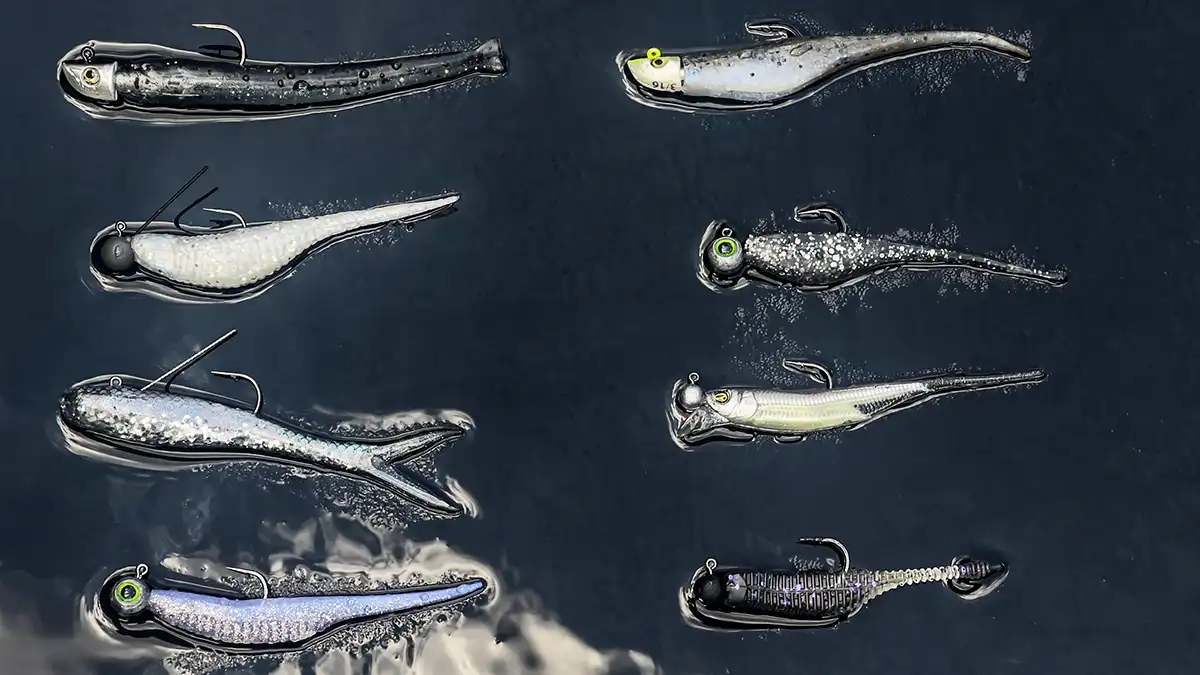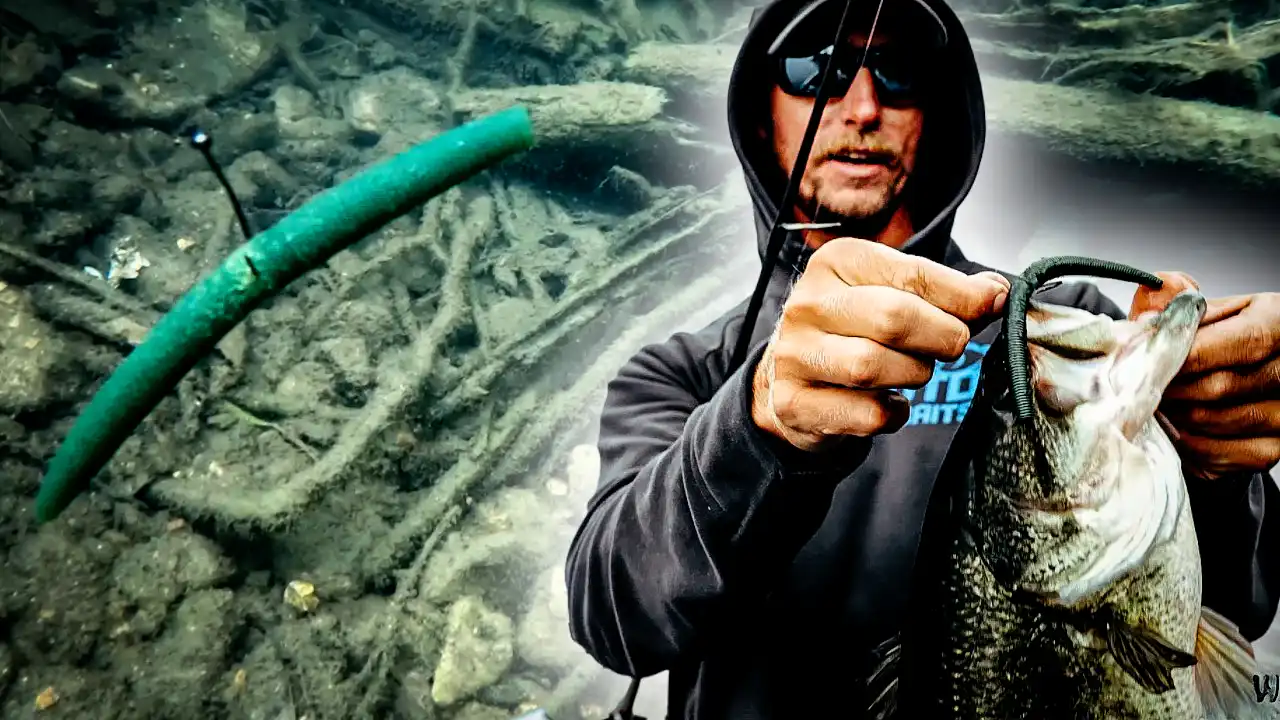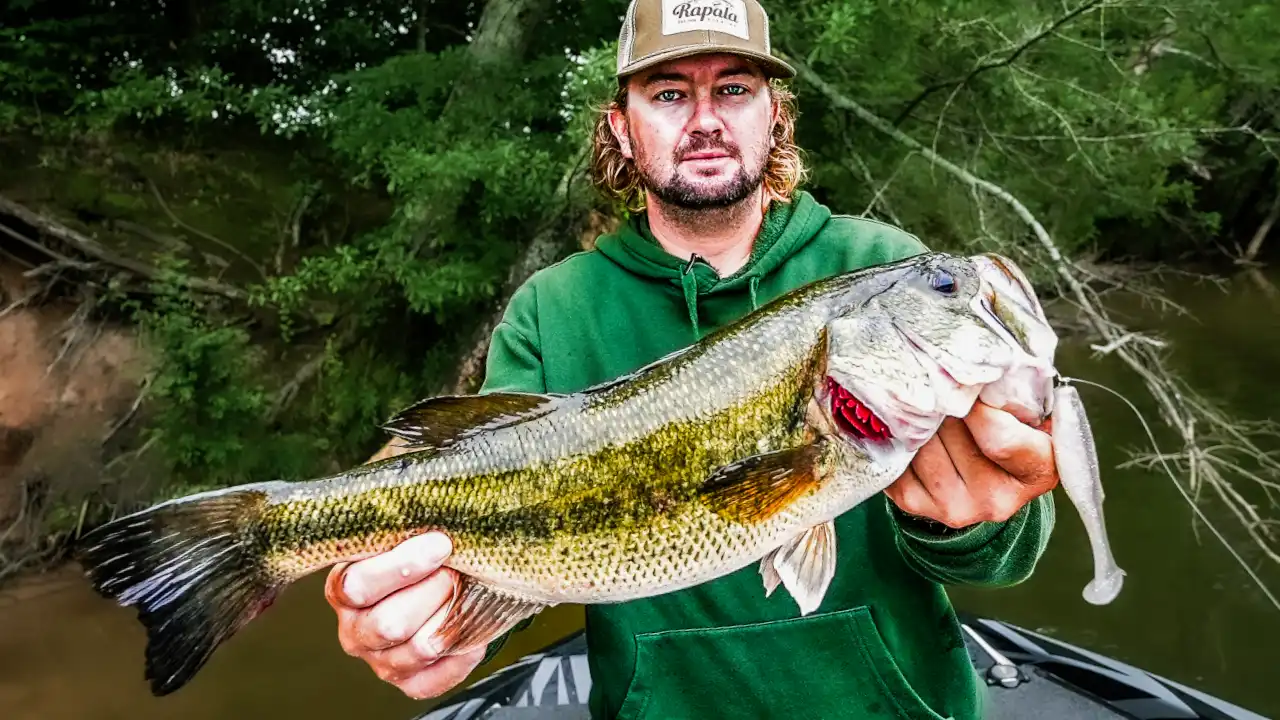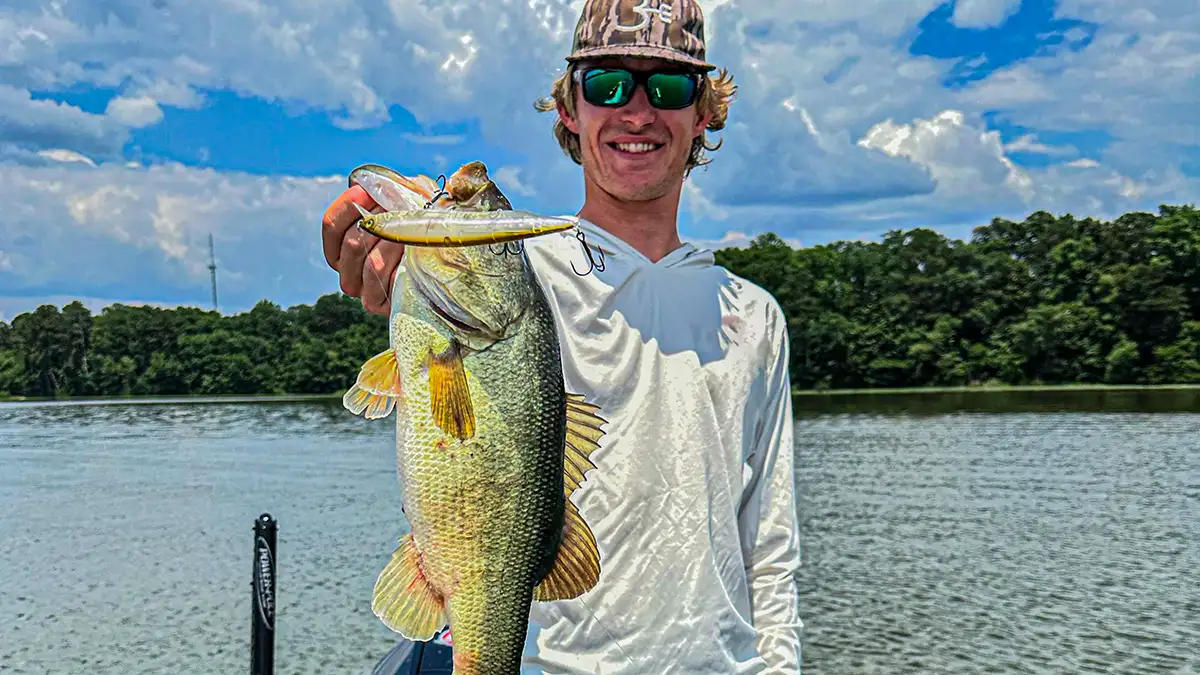When people think of bass, they typically think largemouth, smallmouth, and spotted bass. While these are obviously the most prevalent species of freshwater bass, there are many others that often get overlooked. One of my favorite species of bass to target are commonly known as shoal bass.
This species of fish are fairly rare, and only reside in a few specific bodies of water. Luckily, I have been fortunate enough to live in one of the best areas to target this rare species. Shoal bass feed on similar types of forage as other bass, and can be fairly easy to target if you are fishing a body of water that has them. Once you understand what they are, where they live and what they eat you will have all the necessary tools to target these once in a lifetime fish.
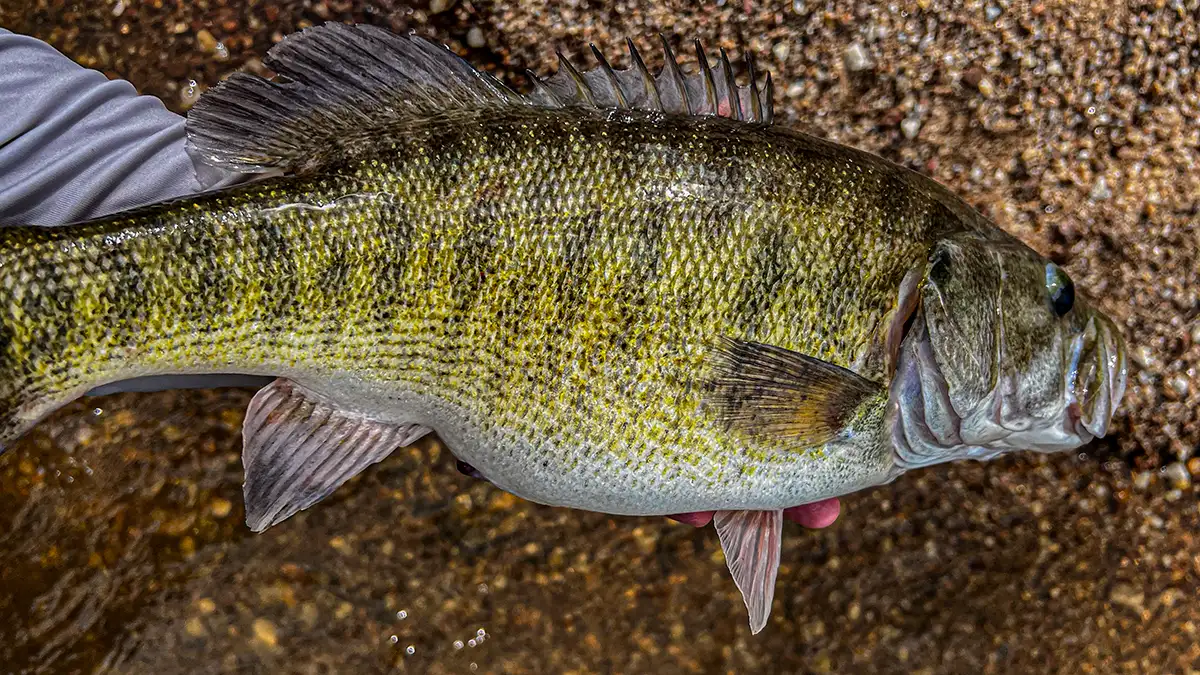
WHAT IS A SHOAL BASS
Micropterus cataractae, also known as shoal bass, are a member of the sunfish family. This is a relatively knew species of bass as they were considered a subspecies of red eye bass until 1999. This can be a common misconception amongst fisherman as they look fairly similar to this species of fish.
Shoal bass have a green colored body with dark black backside. They also have a very distinguishable black dot on the upper corner of their gill plate which helps distinguish them from other species of bass. They also have black lines that run vertically down the sides of their body, giving them a tiger like appearance. The belly of a shoal bass is white with faded lines that appear where the belly meets the side of the fish. The dorsal, caudal and anal fins are dark colored while the pelvic fins are lighter colored much like their underside.
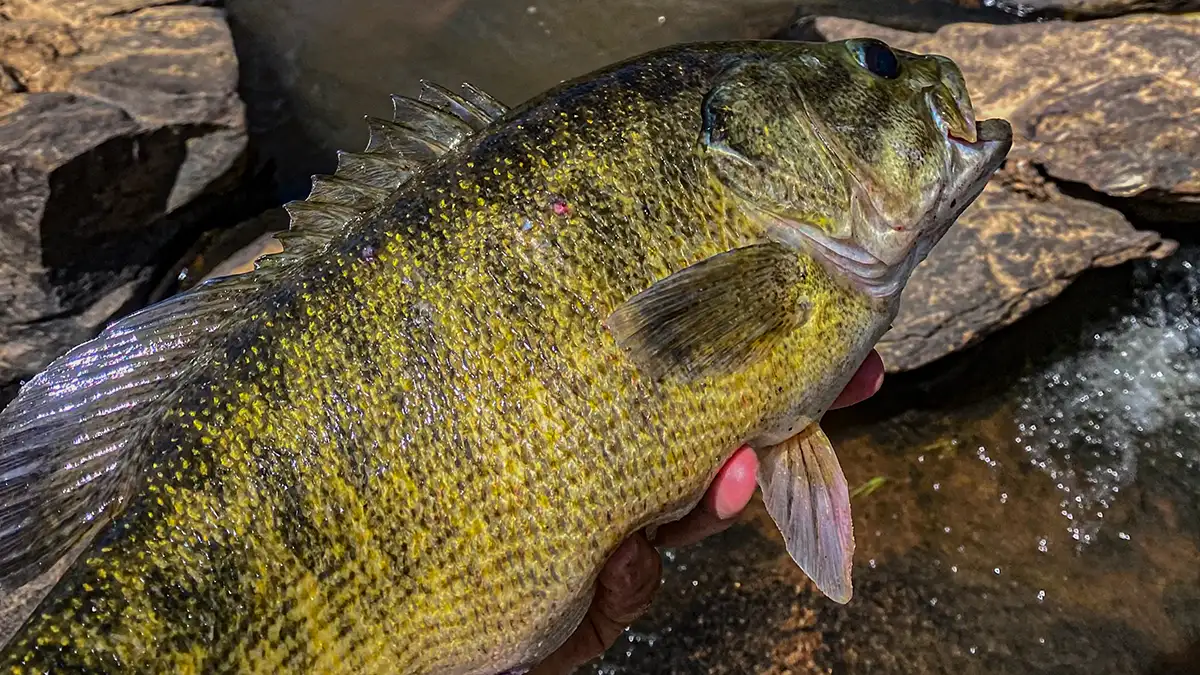
WHERE THEY LIVE
Shoal bass reside in Georgia, Alabama and Florida. While they reside in all three of these states, they only live in very specific bodies of water. Hince the name, these fish prefer to live around rock shoals. Due to their preference for shoals and running water, you will likely never find them in a giant lake or body of water. Some of the rivers they reside in include the Apalachicola, Chipola, Flint and Chattahoochee River drainages. While all of these rivers hold shoal bass, the most prevalent population resides in the Flint River.
The reason these fish reside in these specific bodies of water is due to their specific spawning requirements. In order to spawn, these fish need rocks and cool water. Shoal bass spawn in gravel and around rocks, usually in the months of April, May and June, or better yet when the water temperature is between 64 to 79 °F. While catching these fish off bed can be fun, it is encourages to leave them alone during this vulnerable stage due to their dwindling numbers.
One of the main reasons these fish are starting to become more and more rare is due to the prevalence of spotted bass in the majority of rivers they reside in. Not only do they compete for food and habitat, but spotted bass will hybridize with shoal bass. This can quickly rid the fishery of true shoal bass making them much harder to come by. Many of these bodies of water encourage you to keep any spotted bass you catch in the river systems in order to give the shoal bass a better chance of survival.

HOW TO CATCH THEM
Shoal bass are, pound-for-pound, one of hardest fighting fish you can catch. This is due to them constantly fighting current given their unique location. This paired with their unique colors makes shoal bass an extremely sought after species by bass anglers all over the country.
Targeting this species of fish can be challenging at times, but extremely rewarding once all the pieces come together. In order to target these fish, you must first be on a body of water they reside in such as the Chattahoochee river. This river is located right next to my house, which has given me the unique opportunity to target them on a regular basis.
Almost every body of water that holds shoal bass has spotted and largemouth bass as well. One of the best ways to get away from these other types of fish and specifically target shoal bass is by fishing rock shoals with fast moving water. This is where the majority of shoal bass reside on almost every body of water they live in.
I like to start by targeting current seems and slack water pools located in or around these shoals. These bass will sit right behind a rock with current flowing over it waiting for an easy meal to pass by. This is the most effective way to target shoal bass. You can also fish slack water pools located around shoals. These pools typically have deeper water, which allows these fish to get out of the current and relax in the slack water. These fish can often be harder to trick due to the lack of current and visibility they have in still water. However, these areas can be extremely productive during certain times of year such as mid- to late summer.
You can also target these fish on shallow rock banks during the spring. During the spawn, shoal bass will often move out of the fast moving water in search of spawning grounds. Gravel banks are the perfect areas for these fish to spawn on and can be a very productive pattern for catching shoal bass that are moving up shallow to make beds.
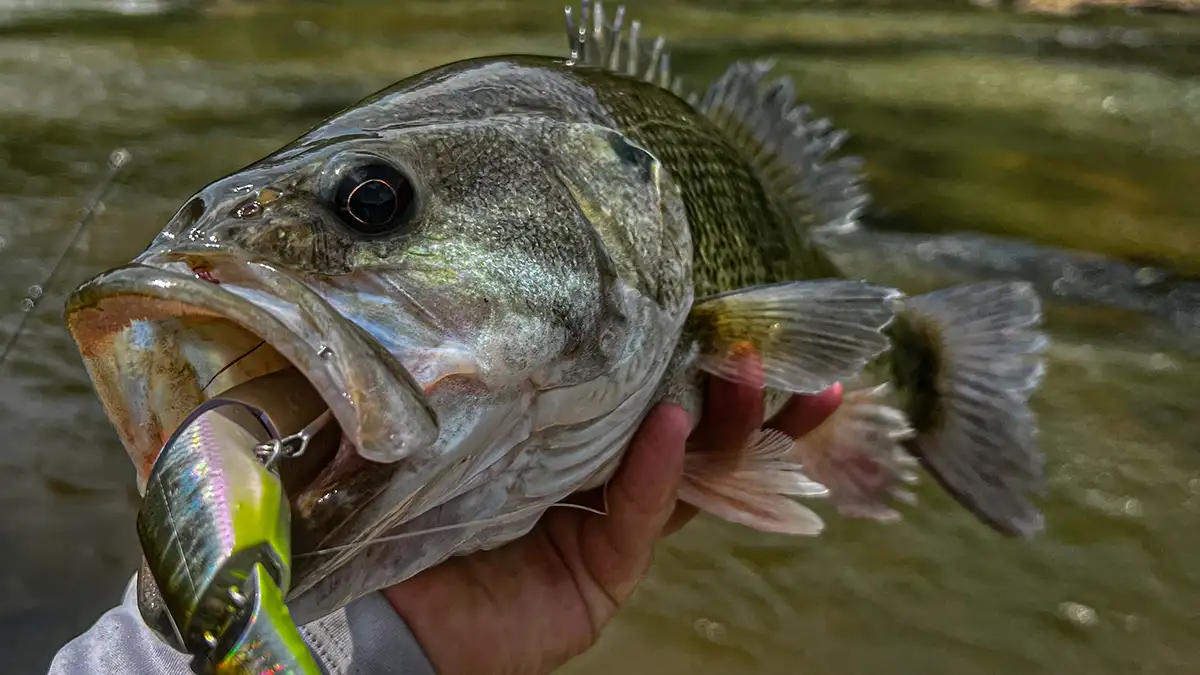
WHAT LURES TO USE
Shoal bass can be extremely aggressive which allows you to catch them on a plethora of different baits. These bass primarily feed on baitfish, insects and crustaceans. Baits that imitate these types of forage are often your most productive choices. On my local river I typically stick with three different styles of baits depending on the time of year and conditions. This includes a ned rig, topwater walking bait and a glide bait.
You can catch shoal bass on almost any lure you prefer, however these are three I have personally had a lot of success with. A ned rig is one lure that has been productive for me year round while targeting shoal bass. This is largely due to the high presence of crayfish in the majority of rivers and streams where these fish reside. A ned rig closely mimics this type of forage which makes it a great option to target shoal bass year round. I especially like to throw a ned rig in deep pools with slack water where bass are often more sluggish compared to in fast moving water. This bait seems to coax them into biting better than any other I’ve found in deep slack water pools.
Another great bait for targeting shoal bass is a topwater style walking bait. This bait is especially good in the summer when fish are keying in on floating insects. I like to throw this bait around current seems, boulders and gravel banks in order to imitate a fleeing baitfish or insect typing to escape the rushing water. This is a great bait to generate some ferocious strikes when looking for a trophy sized shoal bass. My go to walking bait for shoal bass is the Teckel USA Kicknocker PUP.
Lastly, my all time favorite bait to target shoal bass with is a glide bait. You won’t get as many bites due to the baits size, however this is the best way I’ve found to trick quality sized shoal bass into biting. I typically utilize this bait during the spring and early summer due to their increasingly aggressive nature around the spawn. I will typically only get 2-3 bites a day throwing this bait, however the bites you do get are extremely violent and are often from a trophy sized fish. I prefer to throw this bait around deep water pools and rock banks. This is a great bait for calling fish up out of the deep water pools in order to get a good look at them. While you may only get bit a handful of times throughout the day, you will see tons of shoal bass follow your bait which can give you a great understanding of where the majority of these fish are holding. My go to glide bait for targeting shoal bass is the SPRO KGB Chad Shad.
Catching my first trophy shoal bass was a true once in a lifetime experience and something that I will never forget. If you are looking to chase other species of bass outside of the typical offerings, shoal bass can be a really fun species to target. Between their beautiful colors and ferocious personalities, these fish are an absolute blast to catch. By understanding these basic facts and concepts, you will have to necessary tools to go out and target your very first shoal bass.




